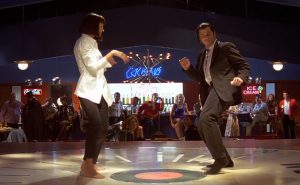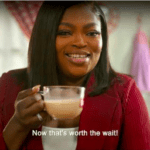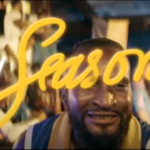
Imagine a Disney movie without a lullaby, Star Wars without the theme music, Jaws without the thrilling sound effects, Grease without the catchy sing-a-long songs, a John Wayne film without the strum of a guitar, Pulp Fiction without a swinging number, or Psycho without the screech of a violin.
The score unquestionably plays a pivotal role in the cinematic experience. It sets the tone of the film, manipulates the way the audience interprets scenes, and creates an overall more intense experience for the viewer. But how do filmmakers decide what music to use? Before the dawn of digital filmmaking, most directors would create the film first then have a composer create a score. Alfred Hitchcock originally wanted the shower scene in Psycho to be silent, but composer Bernard Herrmann added in the screeching violins which was largely responsible for creating one of the most infamous scenes and scores in cinematic history.

Steven Spielberg, Tim Burton, and Peter Jackson also left their score creation in the hands of composers such as John Williams, Danny Elfman, and Howard Shore. Alternatively, directors like Quentin Tarantino, John Landis, and John Hughes are known for picking songs that bleed nostalgia and timelessness all at once. The music in their films often become as essential to the plot as the main characters. Martin Scorsese has mastered the art of silence in film and uses it to build tension and trigger different emotions, as discussed in Tony Zhuo’s video essay on the subject.

It may be hard to imagine these directors having the same success without their infamous sounds. But they are all major directors with grand budgets, so how does an indie filmmaker pick the right music for their film? Well, here are a few things to consider when creating a score for your indie flick:
- Licensing: it can cost a fortune, but using a music score without proper licensing can get you into legal trouble. Indie Wire has published a guide to music licensing. Until you have time and money on your hands you may want to consider the following options;
- a. Seek out original music: networking is key here! There are countless musicians, bands, and composers who may be just as eager to have their music heard as you to have your film made. Find someone whose musical style matches your cinematic flair.
- b. Master silence: “Silence” isn’t always silent! Even the silent era of film had background music. Learn to understand the everyday sounds of events and manipulate them to create tension, mood, and trigger emotions.
2. Create your own score: there are plenty of programs out there that allow you to fiddle in the world of sound design. Apple‘s Logic Pro X is fairly easy to navigate, gives you over 10G of MIDI sounds, samples, and loops that are all free and clear to use!

Whether you create it, commission it, or find it, remember that music plays an important role in film. Use it to create moods, tones, and to guide your audience into feeling certain emotions and anxieties and you will soon be able to master the art of filmmaking!
CREDIT: Kimberly Getz | Edmonton Short Film Festival










